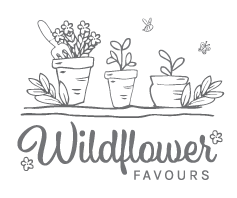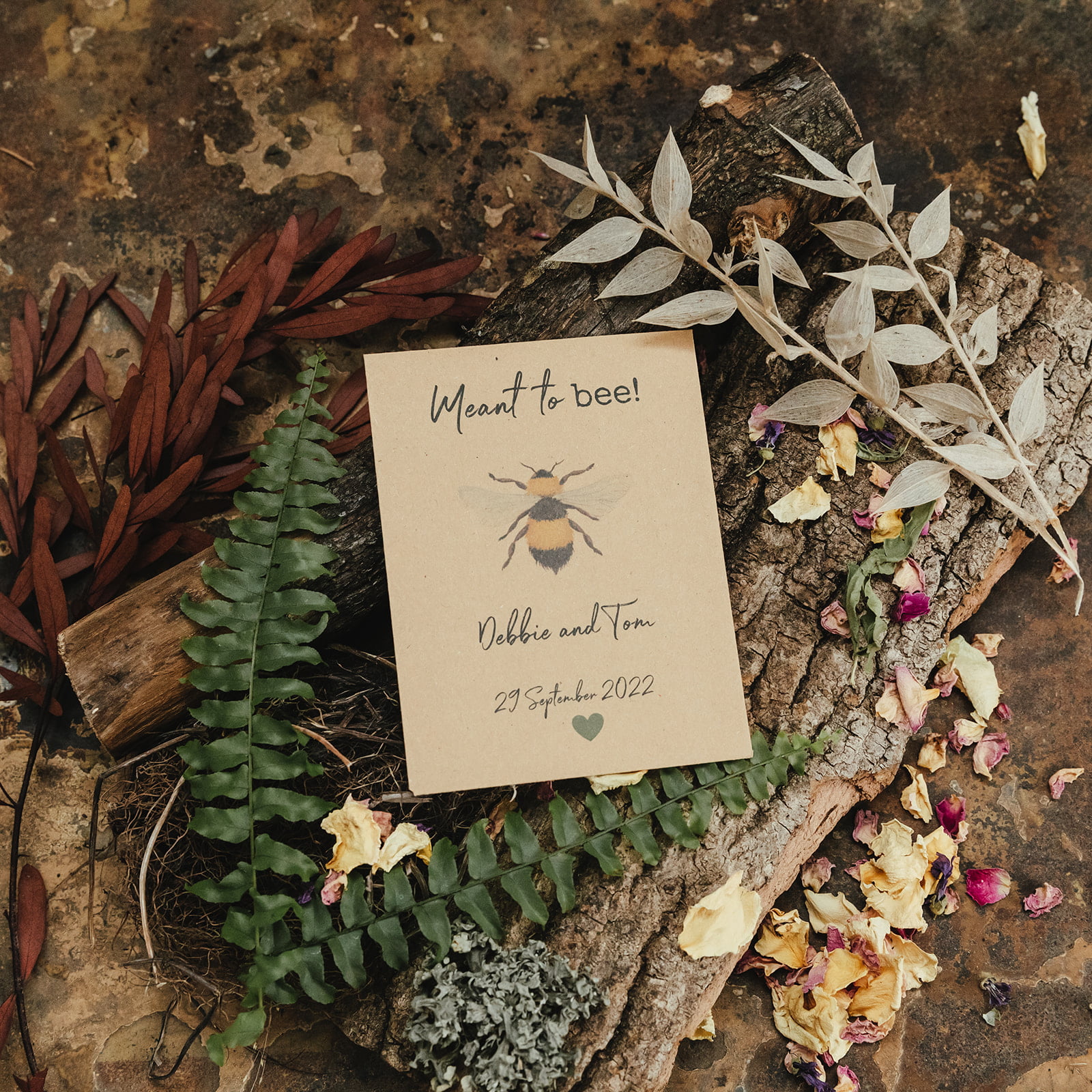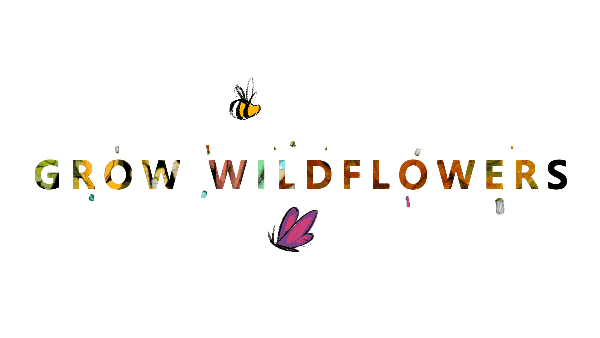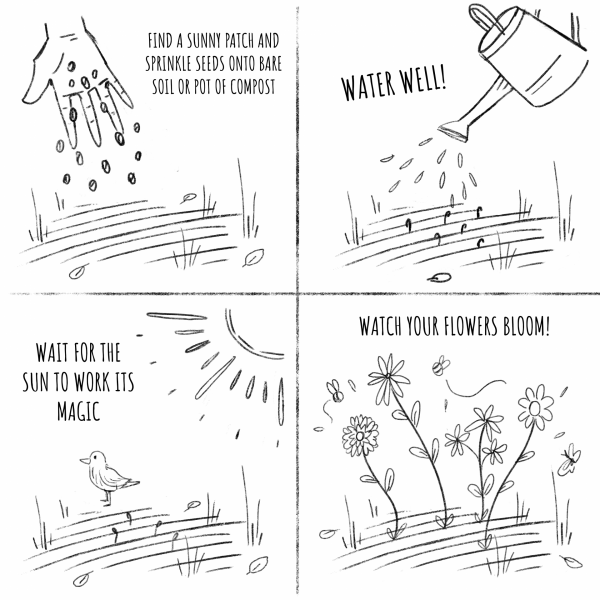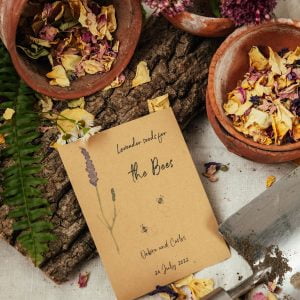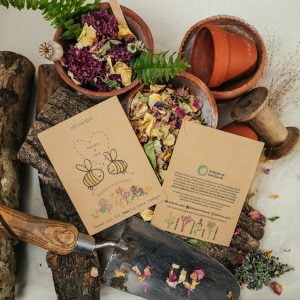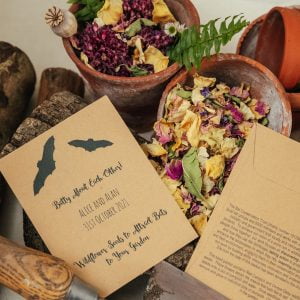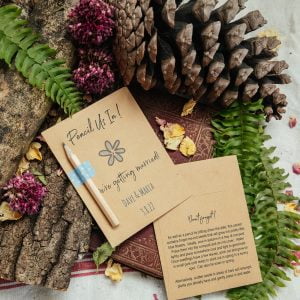Description
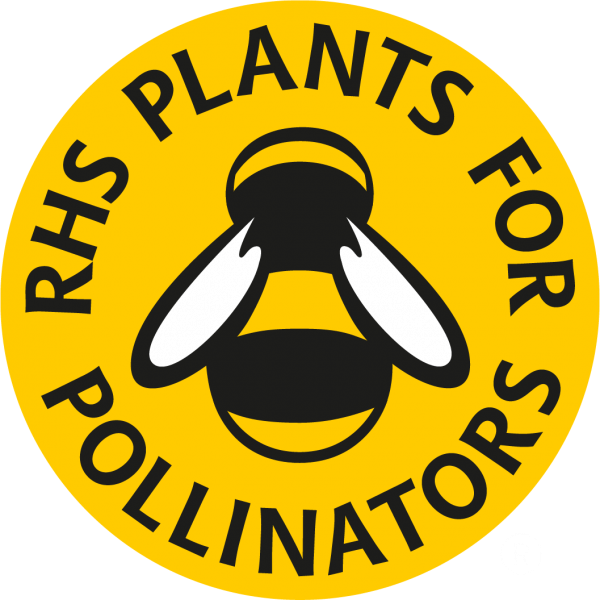 Our British bees are in a bad way, with numbers declining dramatically, so they need as much help from us as they can. This recycled Meant to Bee seed packet wedding favour contains wildflower seeds that will attract bees to your garden (Selfheal, White Campion, Oxeye Daisy and Lesser Knapweed) and is the perfect way to encourage your guests to do their bit to save our bees! The seeds can be sown directly on to the soil or are great for growing in pots too (if your guests have no garden). The seeds have also been grown in the UK and are British wildflower species.
Our British bees are in a bad way, with numbers declining dramatically, so they need as much help from us as they can. This recycled Meant to Bee seed packet wedding favour contains wildflower seeds that will attract bees to your garden (Selfheal, White Campion, Oxeye Daisy and Lesser Knapweed) and is the perfect way to encourage your guests to do their bit to save our bees! The seeds can be sown directly on to the soil or are great for growing in pots too (if your guests have no garden). The seeds have also been grown in the UK and are British wildflower species.
Each seed packet wedding favour is made from quality, 115 gsm, recycled manilla paper and measures 9 x 12 cm. The seeds are inside in a sealed plastic wallet and the sowing instructions and seed content are printed on the back. Please advise your wedding details in the custom text box above.
If you are not using the seeds for a while, they can be stored somewhere cool and light out of direct sunlight, where they will be viable for a few years.
Help the bees, sow wildflower seeds!
About the Seeds
White Campion
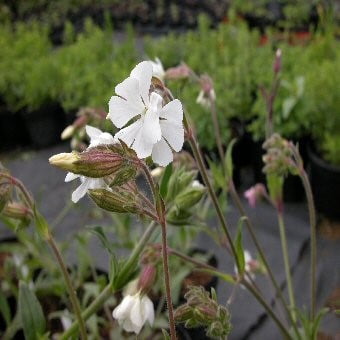
This pretty wildflower is found open wasteground, hedgerows and meadows. It produces a proliferation of white flowers from May to September – great value for money!
Latin name – silene latifolia
Height – 90 cm
Habitat – semi-shade or sun
Perennial
Flowering time – May to October
White Campion is also a popular moth plant, attracting Marbled Coronet, Marbled Clover and Sandy Carpet moths.
Selfheal
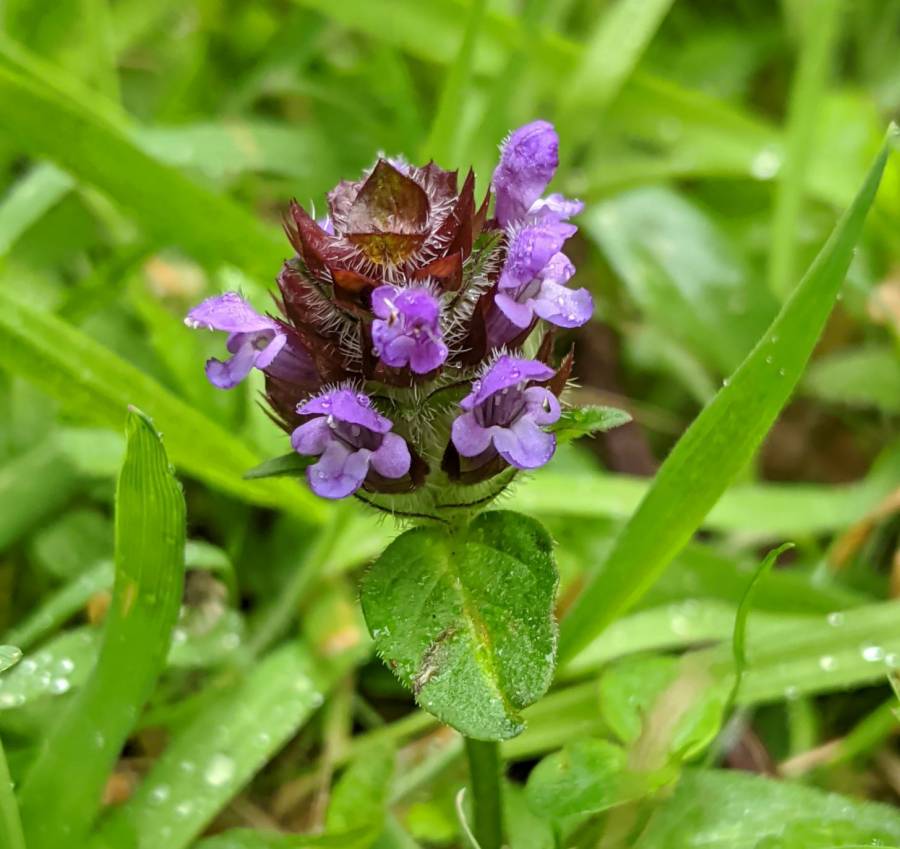 Selfheal is low-growing, often found in lawns and grassland, meadows and road verges in the wild, growing in patches of purple. In folk medicine it was thought that Selfheal was good for treating sore throats because its flower head resembles a throat. Also known as All-heal and Carpenter Herb, among many others.
Selfheal is low-growing, often found in lawns and grassland, meadows and road verges in the wild, growing in patches of purple. In folk medicine it was thought that Selfheal was good for treating sore throats because its flower head resembles a throat. Also known as All-heal and Carpenter Herb, among many others.
Latin name – prunella vulgaris
Height – 20 – 30 cm
Flowering time – June to October
Perennial
Habitat – sunny
Particular bees that love Selfheal – bumblebees and honeybees.
Lesser Knapweed
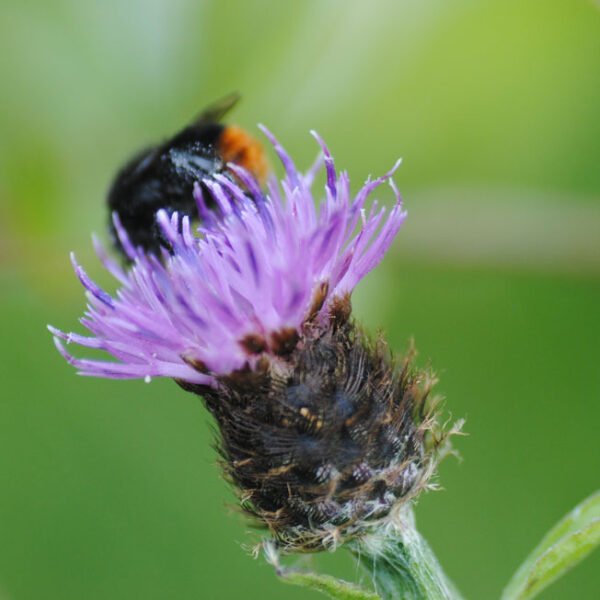
Hardy perennial and member of the Daisy family, found on cliffs and grassland. It has deep-pink, many-petalled flowers opening out from a hard bud. Grows to 65 cm (25.5 in). It is tolerant of coastal conditions and fairly drought-resistant. Flowers all summer.
Bees are very attracted to Lesser Knapweed! The plant attracts butterflies – particularly Tortoiseshell and Painted Ladies, Satyr Pug, Silver Y and Lime Speck Pug moths, and birds like the seeds. Other butterflies – Comma, Silver Washed fritillary, Marbled White, Meadow brown, Ringlet, Small Skipper, Essex Skipper, Silver Spotted Skipper, Chalkhill Blue, Adonis, Brimstone.So, all in all, a very useful plant for pollinators!
In folklore it is claimed that if a maiden picks a flower, removes the expanded florets and places the flowerhead inside her blouse for an hour, if the unexpanded florets have blossomed when the plant is removed then she will soon see the man she is to marry.
Was used in medieval times to treat vaginal bleeding and cancer. Lesser Knapweed root can be made into an ointment to treat cuts and bruises. Please note – this is for info only, always consult a qualified herbal practitioner before using!
Latin name – centaurea nigra
Height – 65 cm
Perennial
Habitat – sunny
Flowering time – May to September
Ox-eye Daisy
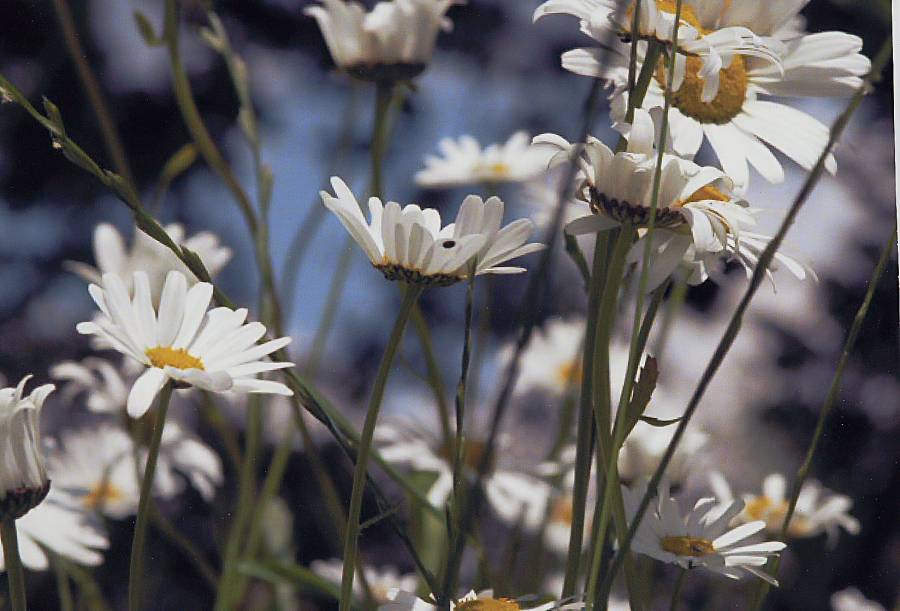 As the name suggests, this wildflower has yellow and white daisy flowers – but these are bigger than your common lawn daisy! Very common on roadside verges, meadows and grassland. Another prolific self-seeder, if you leave the flowerheads on after flowering is over, you will have Ox-eye Daisies everywhere the following year! Hoverflies and beetles also particularly love Ox-eye Daisies!
As the name suggests, this wildflower has yellow and white daisy flowers – but these are bigger than your common lawn daisy! Very common on roadside verges, meadows and grassland. Another prolific self-seeder, if you leave the flowerheads on after flowering is over, you will have Ox-eye Daisies everywhere the following year! Hoverflies and beetles also particularly love Ox-eye Daisies!
Latin name – leucanthemum vulgare
Height – 60 cm
Perennial
Habitat – sunny
Flowering time – May to September
Particular bees that like Ox-eye Daisy – short-tongued bumblebees, solitary bees (such as mining bees – Andrena, Colletes and Halictus species) and some small black stem-nesting bees, such as Hylaeus species

